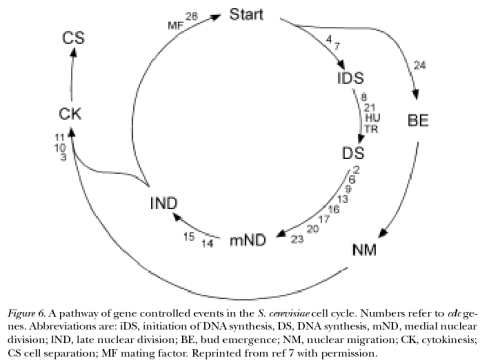 |
Pathways.
We ordered the mutants in a number of ways. First,
by how far they traversed the cycle before arresting. We analyzed the
following cell cycle events: budding, DNA synthesis, nuclear division
cytokinesis and cell division. The event that stopped first after a shift
from the permissive to the restrictive temperature was considered the
primary defect. After the primary defect, other cell cycle events would
occur or not depending upon the particular mutant. Eventually, the cell
would arrest development and generate a terminal phenotype, depending on
which events occurred and which did not. Mutants were found with primary
defects in each of the cell cycle events that we monitored. The phenotypes
of the mutants suggested a relatively simple pathway of dependent events
leading to cell division. The first event, controlled by the CDC28
gene, was required for initiating two pathways, one of which led to budding,
nuclear migration, cytokinesis and cell division. The second led to DNA
replication, nuclear division and joined the first prior to cytokinesis and
cell division. We tested our conclusions by constructing all possible double
mutants and, indeed, the phenotypes of double mutants was precisely that
expected for the pathway. |
